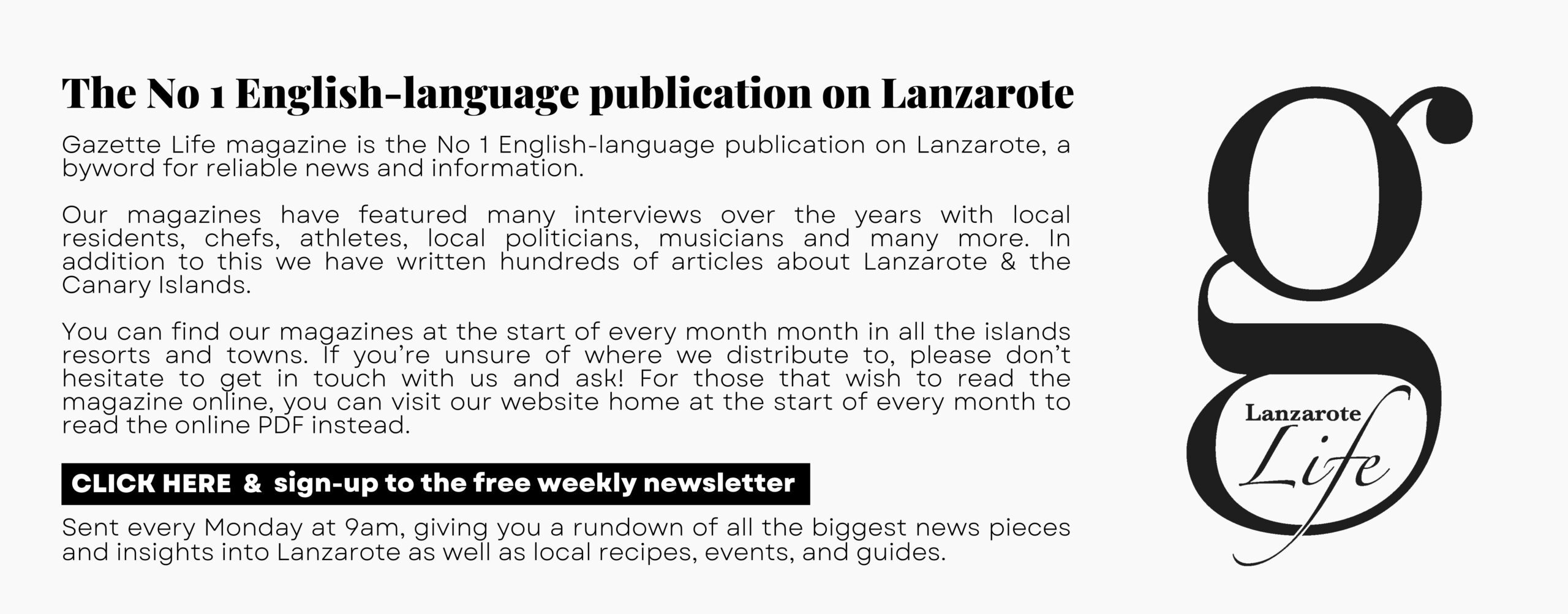Here are some wild and wonderful products that you won’t find back home, but which are available in almost every local supermarket on Lanzarote.
MORCILLA DE ARROZ
Morcilla is Spanish blood sausage, and much more flavoursome than British black pudding. At the deli counter you’ll find smaller, glossy morcillas asturianas, which are usually served in the hearty bean stew called fabada, but the larger, rice-stuffed morcillas de arroz are best sliced and fried, and have a special affinity with eggs and ripe, red peppers.
Slice into rounds about 2 cms thick and fry quickly in plenty of hot oil. Spanish cooks generally use much more oil than a British cook would use for a fry up, and this helps make the morcilla slices crunchy on the outside, as well as giving fried eggs that crunchy “lace border” effect that is valued here.
YERBA MATE
Usually found with the teas, and often on the bottom shelf for some reason, this is Argentina and Uruguay’s national drink, made from the leaves of a member of the holly family. It’s traditionally drunk through a wooden or metal straw from a gourd but can be prepared in the same way as tea with hot but never boiling water. The flavour is herbal and a little bitter.
The mate leaves are rich in caffeine, which means that this drink is a traditional pick-me-up, and is often used in modern energy drinks.
TOMATO FRITO
Buying a tin of tomatoes isn’t as easy as it might seem in Spain. You’ll find them, either entero (whole) or triturado (chopped), but if you’re not careful you might end up buying a can of tomate frito instead, which is usually in a separate aisle.
Tomate frito is a tasty pre-prepared tomato puree, fried with garlic, oil, salt, spices, and basil. It’s a storecupboard staple in Spain, and can be heated up and eaten with rice, eggs, meat, or any other meal that requires a flavoursome sauce.
TINTO DE VERANO
In high summer, tinto de verano comes into its own. Sold in large plastic bottles, it’s basically a blend of red wine and lemonade that is served with plenty of ice to quench thirst. At about 4% alcohol, it’s roughly the same strength as lager.
Tinto de verano is the respectable cousin of calimocho, a 50-50 blend of cheap red wine and coca-cola associated with the young people’s outdoor drinking parties known as botellones. Calimocho’s worth a try, too, we reckon, although you won’t find it in the supermarkets.
CHERNE SALADO
A real Lanzarote speciality, cherne salado (salted wreckfish) is a festive delicacy, and its price reflects it popularity. Wreckfish is a meaty, succulent deep-water fish, and is one of the favourite fish for salting and preserving on the islands.
Salted fish needs to be soaked in three or four changes of fresh water for 24 hours, and can then be cooked as you would with a normal fillet of fish. It has a more pronounced, gamier flavour than fresh fish, and a flaky, satisfying texture. Canarians love this fish in their hearty festive stews, but it’s also delicious poached and served plainly.
ALCAPARRONES
You probably know capers, the little, fragrant pickled flower buds that are an essential ingredient of tartare sauce, but Spain also offers much bigger versions. These are the perfect snack to accompany a glass of chilled dry sherry but can also be used in salads or with fish and meat dishes. You’ll find them in jars, and they can often be quite vinegary. We like the ones sold in Mercadona best.
CHORIZO
Chorizo is now well-known throughout Europe, but Spain still offers the best and the most varied range. Basically, a mixture of pork and spices, chorizos are available in all sorts of forms.
There are the cured, foot-long U-shaped sausages that are sliced and eaten alone are available dulce or picante – the difference being that the latter use spicy, slightly hot paprika. Smaller 45-inch sausages that are often used in cooking are available in net bags or from the deli counter and come smoked (asturiano) and unsmoked. You can also get fresh, uncured chorizos for barbecues and grills.
Canarian chorizo is softer and spread on bread like paté. The most famous variety is from Teror in Gran Canaria, and the variety made by the Chacon grocers is Lanzarote’s best-known chorizo.
TORTAS DE ACEITE
At the Gazette we love these flat, flaky pastries, which are an Andalusian speciality with ancient Arab origins. They’re made of flour, sugar, and olive oil with a delicate flavour of aniseed and sesame, and are available in most supermarkets, with the Inus Rosales brand, which come wrapped in greaseproof paper, being the most famous. Spaniards will generally eat them on their own, but you’re free to do anything you like with them. We recommend a dollop of whipped cream and a spoonful of cherry jam.
GAZPACHO
The best and healthiest gazpacho is homemade, with chilled blended tomatoes, cucumber, pepper, garlic, oil, and bread. But supermarkets also stock cartons of pre-made gazpacho, which are great if you want a rapid blast of flavour and vitamins. You’ll usually find long-life versions and refrigerated cartons, as well as organic varieties and versions without cucumber.
Salmorejo is a slightly different tomato-based cold soup which is also worth trying. Both this and gazpacho are perfect for this time of year.
For regular updates, pictures and videos of Lanzarote be sure to like and follow our Facebook page “Gazette Life Lanzarote”.











